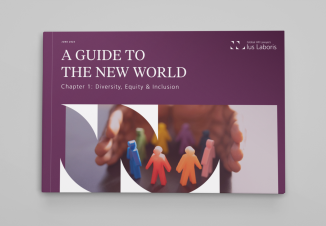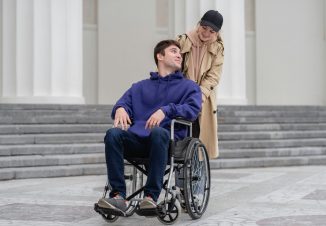
In 1989, Kimberlé Crenshaw introduced the concept of ‘intersectionality’ to explain how different forms of discrimination not only coexist but overlap, creating different experiences of marginalisation. For example, black women, in this context, may face a distinct form of discrimination, as they experience both gender and racial biases simultaneously. Unlike a white woman, who may experience gender-based discrimination without the added layer of racial bias, or a black man, who may face racism without the specific challenges related to gender, a black woman navigates both at the same time.
Her view is that adopting an intersectional approach is necessary to tackle discrimination in all its complexity and so, to effectively promote equality in the workplace, it is necessary to understand the ways categories of identity intersect. In the case of black women in professional settings, she explains that their experiences are marked by a combination of racial and gender biases.
However, how this happens is, as yet, not entirely clear, as current data is generally insufficient to discover the underlying mechanisms, but it is thought that intersectionality may be at least partially responsible for the fact that black women tend to be paid less than others, that they may have fewer opportunities for advancement and suffer more miscroaggressions in the workplace.
In what follows, we will first look at the legal framework that protects certain characteristics (race, gender, etc) at the individual, unitary level and then consider how the law deals with them when combined, through the lens of certain experiences of black women in the workplace that may amount to discrimination based on their hair.
In many countries, discrimination laws protect individuals from unfair treatment based on several protected characteristics, such as race, gender, age and disability. Some legal frameworks do not explicitly address appearance-based bias, for example, whilst the European Union’s legal framework provides express protections against discrimination on grounds such as sex, race, and age, as outlined in Article 19 of the Treaty on the Functioning of the European Union (TFEU) and Article 21 of the EU Charter of Fundamental Rights, appearance-based discrimination is not specifically listed. Consequently, these legal frameworks may not adequately protect against hair discrimination as such.
Discrimination can take different forms:
One example of indirect discrimination in the workplace can be hairstyle policies, depending on how they are drafted and what they cover. Hairstyle rules can be neutral, but can also end up disadvantaging certain categories of people. For example, a general expectation that employees maintain a neat and professional appearance is often reasonable, but when a particular style is associated with an ethnic background, it can become discriminatory.
Hair discrimination, or ‘textureism’, as it is known, can occur where individuals are treated unfairly due to their hair’s texture, colour, length, or styling. This primarily affects people with afro-textured or curly hair, and those wearing protective styles, such as braids, dreadlocks, and afros. In the workplace, either directly or indirectly, restrictive hairstyle policies can create barriers for individuals with these hairstyles. While white individuals can typically meet professional grooming standards by keeping their hair straight and avoiding extreme styles (such as mohawks, for example), black people’s hair is not naturally straight. This means that to comply with workplace expectations, they will often need to chemically straighten or otherwise alter their natural hair, so requiring them, effectively, to modify an aspect of their identity to fit within corporate norms.
But the issue is also gendered. While both black men and women face these challenges, black women are often affected more deeply, as women’s hair styling tends to be more complicated. There are also additional social expectations on women around the issue of femininity as well as professionalism, and these are augmented for black women by the need to suit white western beauty standards. In this way, their hair becomes both a racial and gender marker of professionalism, requiring black women to navigate both racial and gender criteria.
Efforts against hair discrimination are growing, with movements advocating for legal protection and policy changes. Initiatives like the CROWN Act (Creating a Respectful and Open World for Natural Hair), which applies in a number of US states, has set a precedent, inspiring similar discussions in the UK , France and beyond.
In France, the Labour Code, Penal Code and Civil Service Code already explicitly prohibit discrimination based on physical appearance – in contrast to the TFEU and EU Charter. However, on 29 March 2024, the National Assembly approved a proposal to strengthen protections against hair discrimination, with 44 votes in favour and two against. The proposal would prohibit any form of distinction or unequal treatment based on hairstyle, hair texture, length, or colour.
To our knowledge, the courts have not, as yet, dealt with cases of hair discrimination against a black women based on a claim grounded on physical appearance in France and so it is not known how effective this protected characteristic could prove to be. The closest we get is a sex discrimination case heard by the Court of Cassation in 2022 on the rights of a male airline steward facing alleged hair bias, by which he was not allowed braids, whereas the airline’s female employees were. In that case, the Court concluded that it was not possible to forbid men from having a hairstyle that was authorised for women. The Court considered that a hairstyle was not part of the uniform of Air France staff, as it was not something that enabled customers to identify members of the air crew. The Court also held that social convention and the common perception of male and female appearance were not an objective and necessary reason related to the steward’s job that could justify treating him differently based on gender.
Therefore, the central question remains as to whether the proposal to list hair discrimination specifically is necessary or simply clarifies concepts already present in the legislation. However, if a new category of hair discrimination were to be added, that would likely provide additional practical assistance to French judges when faced specifically with cases of hair discrimination and would thereby tackle the intersectional discrimination that often permeates these situations for women of colour.
An interesting evolution on the subject has taken place in Belgium in 2023, where new legislation has formalised the concept of cumulative and intersectional discrimination. This has marked an important step in recognising the multiple layers of bias can accumulate.
Cumulative discrimination is defined as discrimination against an individual on multiple separable grounds and intersectional discrimination is defined as situations in which different factors interconnect, creating a new experience of bias. There has not yet been any notable case law on intersectional discrimination, but there is a considerable body of case law on cumulative discrimination.
Both forms of discrimination can potentially lead to significant compensatory awards. Typically, the sanction for discrimination is six months’ salary, but courts can also impose higher sanctions, awarding up to 12- or 18-months’ salary when multiple forms of discrimination are found.
By acknowledging intersectional experiences, Belgian law may be better equipped to tackle the issues faced by women of colour in cases of hair-based discrimination, as this intersects the categories of race and gender.
As the issue of hair discrimination continues to unfold, such legal frameworks might offer critical lessons for improving protections and creating fairer, more inclusive workplaces across Europe.
It is clearly in the interests of employers to try and spot unfair actions and create workplaces in which all employees can feel fully appreciated. As the above discussion of hair bias illustrates, companies are well-advised to take an intersectional approach that acknowledges how race, gender and cultural identity can shape employees’ experience of the workplace.
Implicit bias training as well as open discussions regarding workplace diversity can help dismantle harmful stereotypes. Visible representation featuring multiple identities – and, for example, presenting diverse hairstyles – can help build a truly all-embracing workplace culture.
Discover more about discrimination in our Global HR Law Guide



